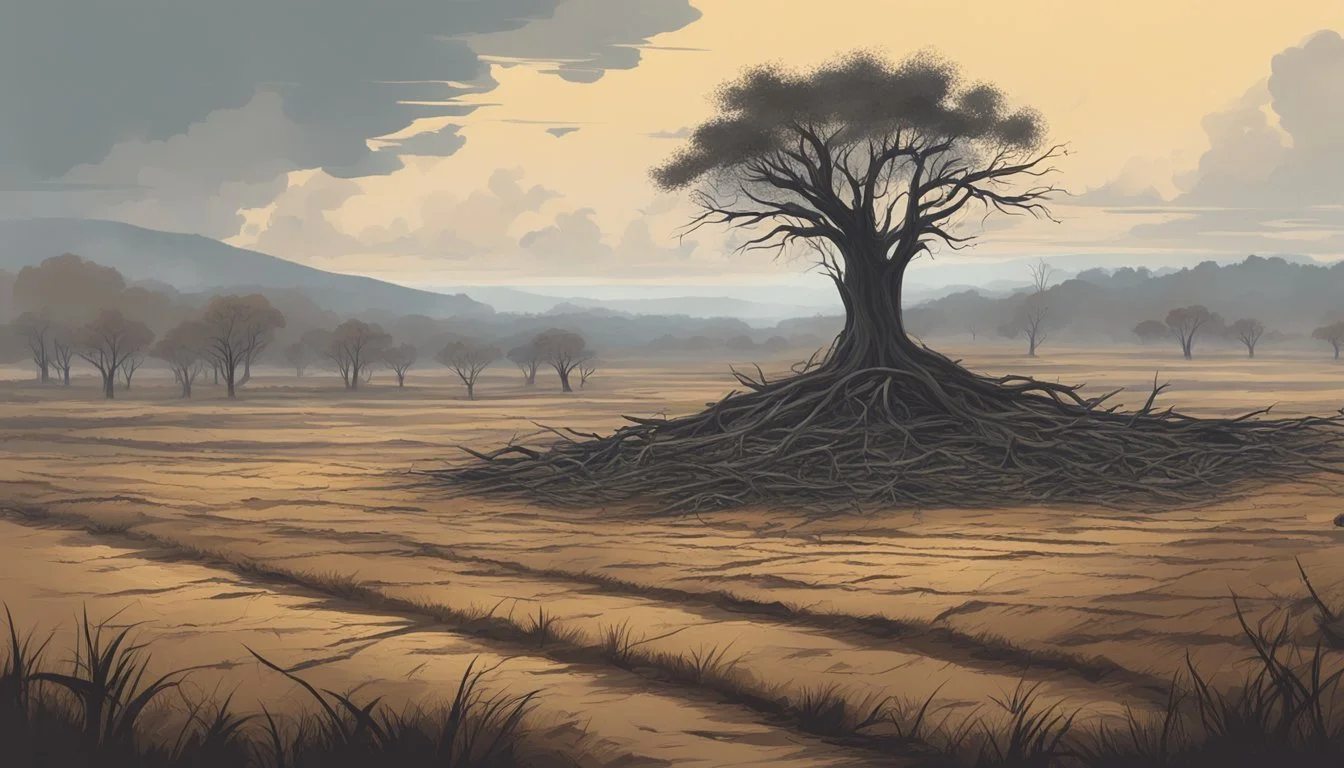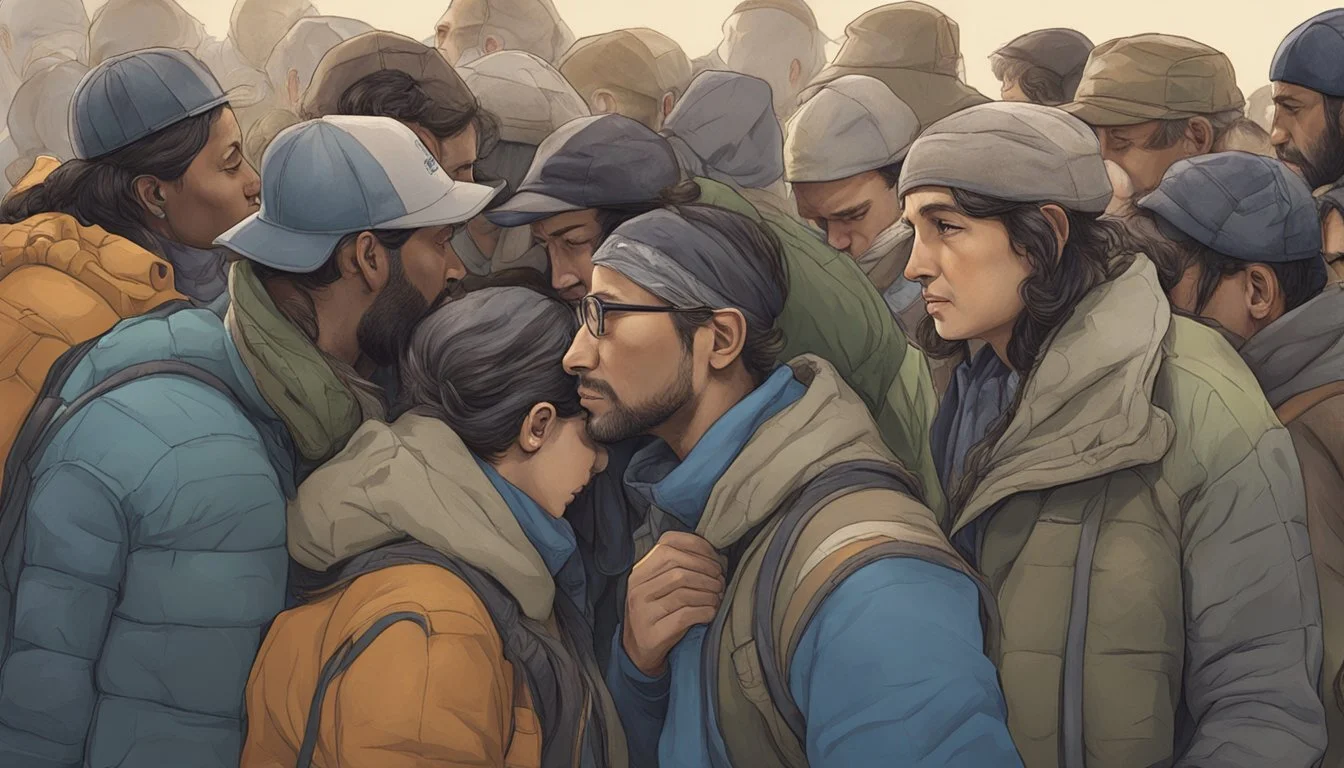Surviving the Killing Fields: The Real Friendship That Inspired the Film
A Tale of Resilience and Hope
The Killing Fields, released in 1984, brought the harrowing story of friendship and survival during Cambodia's darkest period to the world's attention. Based on real events, the film portrays the experiences of American journalist Sydney Schanberg and his Cambodian colleague Dith Pran during the Khmer Rouge regime.
The true story behind the film showcases the extraordinary bond between Schanberg and Pran, which endured despite the brutal circumstances of war and genocide. Their friendship, forged in the chaos of conflict, became a beacon of hope amidst the unimaginable horrors of the Killing Fields.
The film's power lies in its authentic portrayal of Pran's struggle to survive the Khmer Rouge's "re-education" camps and his perilous journey to freedom. Through vivid imagery and compelling performances, The Killing Fields brings to life the resilience of the human spirit in the face of unthinkable adversity.
Historical Context of Cambodia
Cambodia's turbulent history in the 1970s was marked by political upheaval, foreign intervention, and a brutal regime that led to widespread suffering. The country's fate became intertwined with regional conflicts and ideological extremism.
Rise of the Khmer Rouge
The Khmer Rouge, a radical communist movement, emerged in Cambodia during the 1960s. Led by Pol Pot, the group gained strength amidst political instability and rural discontent. In 1975, they seized power, renaming the country Democratic Kampuchea.
Pol Pot's regime implemented a radical vision of agrarian socialism. They forcibly evacuated cities, abolished money, and outlawed religion. The Khmer Rouge declared 1975 as "Year Zero," aiming to create a classless society.
This experiment resulted in catastrophic consequences. Millions were subjected to forced labor, torture, and execution. The regime targeted intellectuals, minorities, and anyone perceived as enemies of the state.
Vietnam War and Cambodia's Turmoil
The Vietnam War significantly impacted Cambodia's political landscape. U.S. bombing campaigns in eastern Cambodia aimed to disrupt North Vietnamese supply lines. These actions destabilized the country and inadvertently strengthened the Khmer Rouge.
Cambodia's neutrality in the conflict proved impossible to maintain. The war spilled over its borders, drawing the nation into a broader regional struggle. This instability created conditions that allowed the Khmer Rouge to gain popular support.
As the Vietnam War concluded, Cambodia faced isolation. The Khmer Rouge's increasing aggression towards Vietnam led to a full-scale invasion in 1978. Vietnamese forces overthrew Pol Pot's regime, ending the Killing Fields but initiating a prolonged occupation.
The Real-Life Story of Dith Pran and Sydney Schanberg
Dith Pran and Sydney Schanberg formed a remarkable partnership as photojournalist and reporter during the Cambodian genocide. Their friendship and professional collaboration led to powerful coverage of the Khmer Rouge regime's atrocities.
New York Times Coverage
Sydney Schanberg began working for The New York Times in 1959. While covering the fall of Cambodia's capital to the Khmer Rouge in the 1970s, he met Dith Pran. The two journalists worked closely together to document the unfolding crisis.
Dith survived four years under the brutal Khmer Rouge regime. After escaping to Thailand in 1979, he reunited with Schanberg in the United States. Dith then joined The New York Times as a photojournalist in 1980.
Schanberg's 1980 New York Times Magazine article "The Death and Life of Dith Pran" brought widespread attention to Dith's ordeal. This piece later inspired the 1984 film "The Killing Fields," which dramatized their experiences.
Dith continued his work at The New York Times until his death in 2008. His survival and subsequent career as a photojournalist highlighted the power of friendship and journalism in the face of genocide.
The Making of 'The Killing Fields'
'The Killing Fields' emerged as a powerful cinematic portrayal of the Cambodian genocide. The film's production brought together a talented team dedicated to telling this crucial story.
From Concept to Production
David Puttnam, a renowned British producer, spearheaded the project. He acquired the rights to Sydney Schanberg's article about his experiences in Cambodia. Bruce Robinson penned the screenplay, adapting the harrowing true story for the big screen.
The film faced initial challenges in securing funding due to its sensitive subject matter. However, Puttnam's persistence paid off, and production began in 1983.
Casting proved crucial. Sam Waterston was chosen to play Schanberg, while John Malkovich took on the role of photographer Al Rockoff. The most significant casting decision was Haing S. Ngor, a Cambodian doctor and genocide survivor, as Dith Pran.
Roland Joffé's Directorial Vision
Roland Joffé, a relatively unknown director at the time, brought a unique perspective to the project. He insisted on filming in Thailand to capture the authentic atmosphere of Southeast Asia.
Joffé's approach emphasized realism and emotional depth. He worked closely with the actors, particularly Ngor, to draw out genuine performances. The director also incorporated documentary-style techniques to enhance the film's authenticity.
Joffé's vision extended to the film's visual style. He collaborated with cinematographer Chris Menges to create a raw, immersive look. This approach helped convey the chaos and brutality of the Khmer Rouge regime.
Notable Cast and Crew
The Killing Fields featured powerful performances from its lead actors and strong contributions from the supporting cast. The film's success was due in large part to the authentic portrayals and chemistry between the main characters.
Haing S. Ngor's Impactful Performance
Haing S. Ngor, a Cambodian doctor with no prior acting experience, delivered a remarkable performance as Dith Pran. His portrayal was deeply authentic, drawing from his own experiences during the Khmer Rouge regime.
Ngor's performance earned him an Academy Award for Best Supporting Actor, making him the first Asian performer to win in that category. His raw emotion and vulnerability on screen brought Dith Pran's story to life in a way that resonated with audiences worldwide.
The actor's personal connection to the material added a layer of authenticity that elevated the entire film. Ngor's ability to convey complex emotions without dialogue was particularly noteworthy.
Contributions of the Supporting Actors
Sam Waterston portrayed Sydney Schanberg with nuance and depth. His chemistry with Ngor was crucial in depicting the friendship at the heart of the story.
John Malkovich, as photographer Al Rockoff, brought intensity to his role. His character provided a different perspective on the events unfolding in Cambodia.
Craig T. Nelson and Athol Fugard rounded out the supporting cast with strong performances. Nelson played a military attaché, while Fugard portrayed Dr. Sundesval, adding depth to the film's portrayal of various individuals caught in the conflict.
These actors' collective efforts created a powerful ensemble that brought the harrowing story of the Cambodian genocide to life on screen.
Cinematic Achievements and Reception
The Killing Fields garnered widespread acclaim for its powerful storytelling and performances. It received multiple prestigious awards and nominations, cementing its place in cinematic history.
Academy Awards and Nominations
The Killing Fields earned seven Academy Award nominations in 1985. Haing S. Ngor won Best Supporting Actor for his portrayal of Dith Pran, making him the first Asian performer to win in this category. Chris Menges took home the Oscar for Best Cinematography, capturing the haunting beauty and terror of Cambodia's landscapes.
The film also received nominations for Best Picture, Best Actor (Sam Waterston), Best Director (Roland Joffé), Best Screenplay (Bruce Robinson), and Best Film Editing (Jim Clark). Jim Clark won the award, recognized for his skillful assembly of the complex narrative.
Critical Acclaim and Box Office Success
Critics praised The Killing Fields for its unflinching portrayal of the Cambodian genocide. Roger Ebert gave it four stars, calling it "an extraordinary film." The New York Times lauded its "searing intensity" and "emotional power."
The film performed well at the box office, grossing over $34 million in the United States. It resonated with audiences worldwide, bringing attention to the atrocities committed by the Khmer Rouge regime.
The Killing Fields' success extended beyond awards season. It continues to be studied in film schools and is often cited as one of the most important war films ever made.
Portrayal of the Cambodian Genocide
The Cambodian Genocide has been depicted in various media, providing insight into the atrocities committed by the Khmer Rouge regime. These portrayals aim to preserve the memory of victims and survivors while educating audiences about this dark period in history.
Depiction of the Killing Fields
The Killing Fields, sites where mass executions took place, have become powerful symbols of the Cambodian Genocide. Films and documentaries often show these areas as desolate landscapes filled with human remains. Visual representations frequently include mass graves, scattered bones, and tattered clothing.
Artistic works depict the fear and desperation of prisoners led to these sites. They highlight the brutality of Khmer Rouge soldiers carrying out executions. Some portrayals focus on the aftermath, showing local people discovering the horrific scenes left behind.
Representation of the Atrocities
Media portrayals of the Cambodian Genocide often focus on specific atrocities committed during the Khmer Rouge regime. These include forced labor, torture, and mass killings. Depictions frequently show overcrowded prisons, such as the infamous Tuol Sleng (S-21) detention center.
Representations often include scenes of prisoners enduring harsh interrogations and inhumane living conditions. The systematic nature of the genocide is portrayed through images of meticulous record-keeping by Khmer Rouge officials. Some works also depict the regime's attempts to erase Cambodian culture and traditions.
Personal stories of survivors are often used to provide a human perspective on the genocide. These accounts help audiences connect emotionally with the victims and understand the long-lasting impact of the atrocities.
Legacy and Impact on Popular Culture
"The Killing Fields" left an indelible mark on cinema and society. Its powerful storytelling and unflinching portrayal of the Cambodian genocide resonated deeply with audiences worldwide.
Influence on Subsequent War Films
"The Killing Fields" set a new standard for war films, inspiring a generation of filmmakers. Its gritty realism and focus on personal stories amid large-scale conflict influenced movies like "Platoon" and "Schindler's List." The film's innovative cinematography, using handheld cameras and natural lighting, became a blueprint for capturing the chaos of war on screen.
Many war films that followed adopted similar techniques to create a sense of immediacy and authenticity. "The Killing Fields" also paved the way for more nuanced portrayals of war correspondents and local fixers in cinema.
Educating Future Generations
The film played a crucial role in raising global awareness about the Cambodian genocide. It became a valuable educational tool, used in schools and universities to teach about this dark period in history.
The movie's impact extended beyond the classroom. It inspired humanitarian efforts and increased support for Cambodian refugees. Organizations used screenings of "The Killing Fields" to promote discussions on human rights and genocide prevention.
The film's enduring legacy is evident in its continued relevance. New generations discover it through anniversary screenings and home video releases, ensuring that the story of Dith Pran and Sydney Schanberg remains alive in popular culture.
The Experience of Cambodian Refugees
Cambodian refugees faced harrowing journeys to escape the Khmer Rouge regime. Many fled to neighboring Thailand, while others sought asylum through foreign embassies in Phnom Penh.
Escape to Thailand and Beyond
Thousands of Cambodians fled on foot through dense jungles and minefields to reach refugee camps in Thailand. The journey was perilous, with many succumbing to starvation, disease, or violence along the way.
Those who made it to Thailand found temporary shelter in overcrowded camps like Khao-I-Dang. Conditions were often dire, with limited food, water, and medical care.
From these camps, refugees hoped to resettle in countries like the United States, France, and Australia. The process was slow and uncertain, leaving many in limbo for years.
The Role of Foreign Embassies
In Phnom Penh, some Cambodians sought protection at foreign embassies. The French Embassy became a sanctuary for thousands in April 1975.
For two weeks, the embassy compound sheltered Cambodians and foreign nationals. Conditions deteriorated rapidly as food and water ran low.
The Khmer Rouge eventually forced all Cambodians to leave the embassy. Many were sent to labor camps or execution sites, while foreigners were evacuated to Thailand.
Some embassy staff risked their lives to help Cambodians escape, issuing visas or smuggling people out in diplomatic vehicles.
Conclusion
The friendship between Sydney Schanberg and Dith Pran transcended cultural barriers and the horrors of war. Their bond, forged in the crucible of Cambodia's darkest days, left an indelible mark on history.
Dith Pran's remarkable survival story exposed the world to the atrocities of the Khmer Rouge regime. His experiences, documented by Schanberg, brought international attention to Cambodia's plight.
The Oscar-winning film "The Killing Fields" immortalized their story, educating millions about the Cambodian genocide. It stands as a powerful testament to human resilience and the enduring power of friendship.
Dith Pran's legacy lives on through his advocacy work and the countless lives he touched. His journey from survivor to photojournalist and human rights activist continues to inspire.
The story of Schanberg and Pran reminds us of the importance of bearing witness to history. Their friendship, built on mutual respect and shared experiences, exemplifies the best of human nature in the face of unimaginable cruelty.






